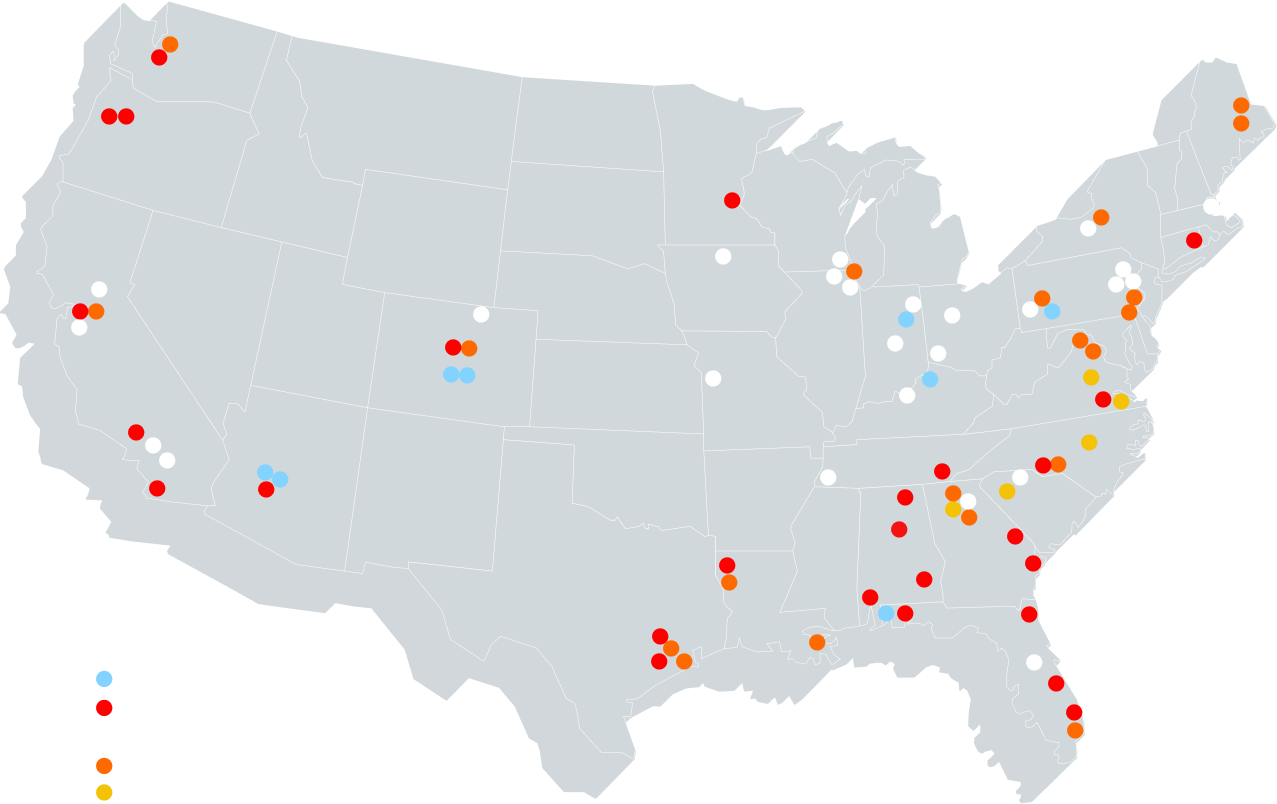Salt fog testing is a popular form of corrosion testing that helps determine corrosion’s effects on functionality and appearance. ISO 9227 testing simulates weathering and corrosion in artificial atmospheres. ISO 9227 specifies three distinct forms of salt fog testing: neutral salt spray, acetic acid salt spray, and copper accelerated salt spray. This type of testing can:
- Evaluate and compare metallic materials’ level of corrosion resistance with or without corrosion protection
- Detect pores, discontinuities, and damages in organic and inorganic coatings
- Project protective coatings’ lifespan
- Assess protective coatings’ effectiveness
Salt Fog Testing
Neutral Salt Fog
The most fundamental method encompassed by ISO 9227 testing is the neutral salt spray (NSS). The neutral salt fog applies a standard 5% NaCl salt solution to test material resistance to moisture and salt corrosion. The NSS tests metals and their alloys, metallic materials with organic coatings, conversion coatings, cathodic and anodic metallic coatings, and anodic oxide coatings.
Acetic Acid Salt Fog
The acetic acid salt spray test (AASS) adds glacial acetic acid to the 5% salt solution to reach the test’s acceptable pH range. The AASS method has a much lower pH than the NSS, making it a more aggressive corrosion test. This ISO 9227 variation tests decorative chromium, nickel, and copper coatings.
Copper Accelerated Acetic Acid Salt Fog (CASS)
The CASS is an accelerated corrosion testing method that determines nickel-, copper-, and chrome-plated parts’ corrosion resistance. The CASS salt solution contains additives of copper chloride and glacial acetic acid. Exposure duration varies based on whether the corrosion resistance under evaluation is intended for appearance or functionality. The CASS salt solution is significantly more aggressive than the neutral salt solution, so exposures are typically 48 hours or less; this makes the method a fast, efficient choice for examining corrosive performance.
ATS technicians often perform this test on materials designed to endure severe conditions, including decorative nickel, chromium, and copper; it also covers plastics, aluminum alloys, zinc alloys, and anodic coatings on aluminum.
Salt Fog Testing with ATS
The ATS salt spray lab utilizes state-of-the-art equipment and maintains ISO/IEC 17025:2017 accreditations. Our staff provides high-quality customer service, reporting clear and accurate data in a short turnaround window. A report from ATS can include:
- Test chamber conditions, including pH, temperature, and specific gravity
- The chamber’s compliance and calibration data, and that of any supporting equipment
- Detailed photos of the sample materials at any specified interval
- Quantitative data, including blistering percentage and the degree of creepage from scratches in coatings
If you need ISO 9227 testing, contact Applied Technical Services today.



